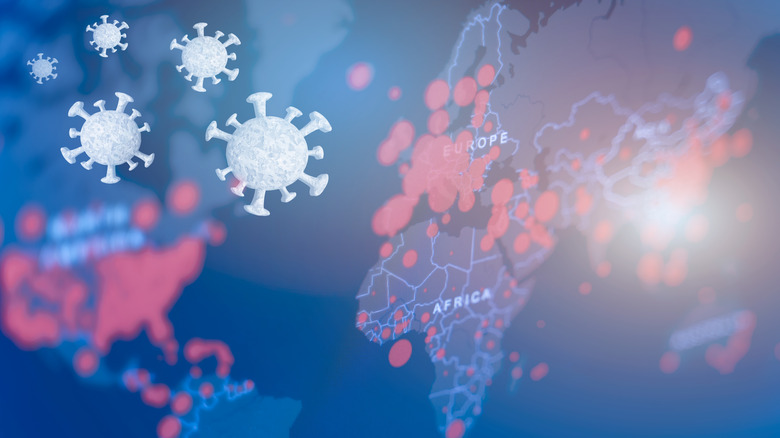Will Omicron Be The Last COVID Variant?
For the last several months, the BA.5 Omicron subvariant has maintained its position as the predominant COVID-19 strain across the country, reports Yale Medicine. Responsible for over 88% of all COVID-19 cases in the U.S., many are wondering, can we expect yet another variant to follow?
"Delta was never going to be the last variant — and Omicron is not going to be the last one," Dr. Nathan Grubaugh, epidemiologist at the Yale School of Public Health, tells Yale Medicine. "As long as there is a COVID-19 outbreak somewhere in the world, there is going to be something new that emerges." What that "something new" looks like, however, could take different forms, scientists note. Some experts believe we may be looking at the emergence of another subvariant belonging to the Omicron family. "I think a good guess is that either BA.2 or BA.5 will spawn additional descendants with more mutations and that one or more of those subvariants will spread and will be the next thing," evolutionary biologist Jesse Bloom says to Science.
The possibility of an entirely new variant
Alternatively, some health experts believe we may potentially see the revival of a previous variant — even one as old as Alpha or Delta. Virologist at Imperial College London Tom Peacock explains, telling Science, "This is what we would call second-generation variants." Peacock attributes this viral resurgence to a process known as accelerated evolution following a period of chronic infections.
And still, some theorize that we may encounter the emergence of a new variant altogether, earning itself the title of the Greek letter Pi (via Science). However, scientists note that this scenario may be less likely to occur as long as Omicron is around, reports Nature. The reason being, a new variant would have to overtake Omicron in its immunity-evading capabilities, a strength that Omicron already has. In other words, Dr. Grubaugh describes the Omicron subvariants as "stiff competition," per Science.
When we can expect a new variant or subvariant to emerge, however, remains to be seen, according to Nature. Although previous Omicron variants around the globe began to surface a few months apart from one another, protection levels have increased due to prior infection and vaccine-induced immunity. Therefore, experts say these factors may potentially slow the patterns previously seen with the emergence of new viral strains.


